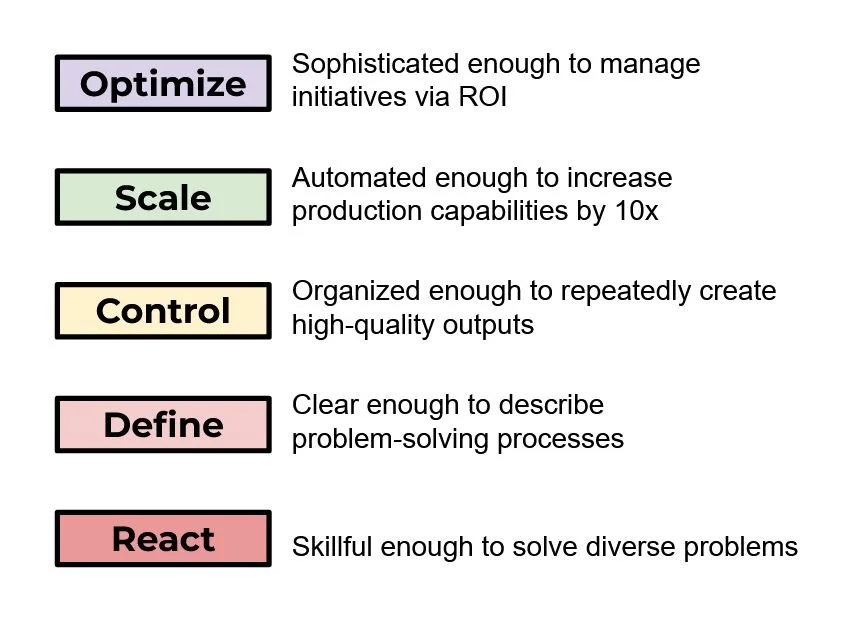Integrating Tech, Data, and Product Strategies
Establishing an Innovation-focused R&D Strategy
There are many ways that people can define strategy. For some, a strategy is a hierarchical tree of responsibilities, for others, an activity list with clear responsible parties. These to-dos and deliverables-oriented methods are appropriate when operations are concretely defined, and cost control is the focus. Because many companies are entering a cycle of innovation that could change its business model, our implementation of strategy must evolve too. Innovation strategy must focus on how we make strategic investments to get from the current state to target future states that change the business. This means explicit attention must be given to creating real and incremental gains and iterative feedback so that a desirable business model is designed, updated, and executed along the way. We must be able to create a narrative where investments today enable a viable business model tomorrow.
Business Strategy Requires Integration of Product, Data, and Tech
Let’s assume that we are a company that plans to make a strategic investment in the next 2 years to create in-house product R&D capabilities. This will allow the business to evolve from its current service operation to one that generates significant revenues from software products that leverage the company’s unique data assets and existing expertise. These software products have low operational costs and create excess profits that can be reinvested in expanding the paid feature set and new market penetration of the company'’s solutions. For the business to be successful on this timescale, the integration between the Product, Technology, and Data Strategies must be tight.
The Technology Strategy must aggressively transform the company from a company that purchases and consumes technology into a company that can create technology solutions and reap benefits from the ecosystem of applications it owns. This means an evolution from traditional IT management practices and towards platform and infrastructure development. This enables the company to develop and own an ecosystem of applications, rotate in-house and expert development teams into its ecosystem, and realize long term gains through recurring revenue.
Within that platform infrastructure, Product needs to design a portfolio of products that creates compelling customer value propositions. Customization and interactivity within software solutions differentiate user experiences and can dramatically increase the barrier to copy cat products and the price point customers are willing to pay. Customization, interactivity, and targeting depend almost entirely on a company’s data capabilities.
Different business models therefore require different data capabilities. Here is a summary of the various data capability profiles that exist for various stages of the business model.

